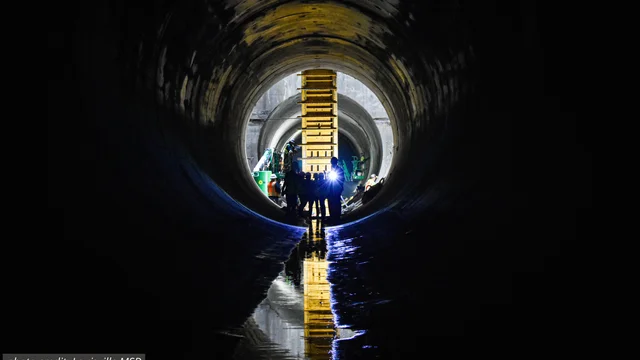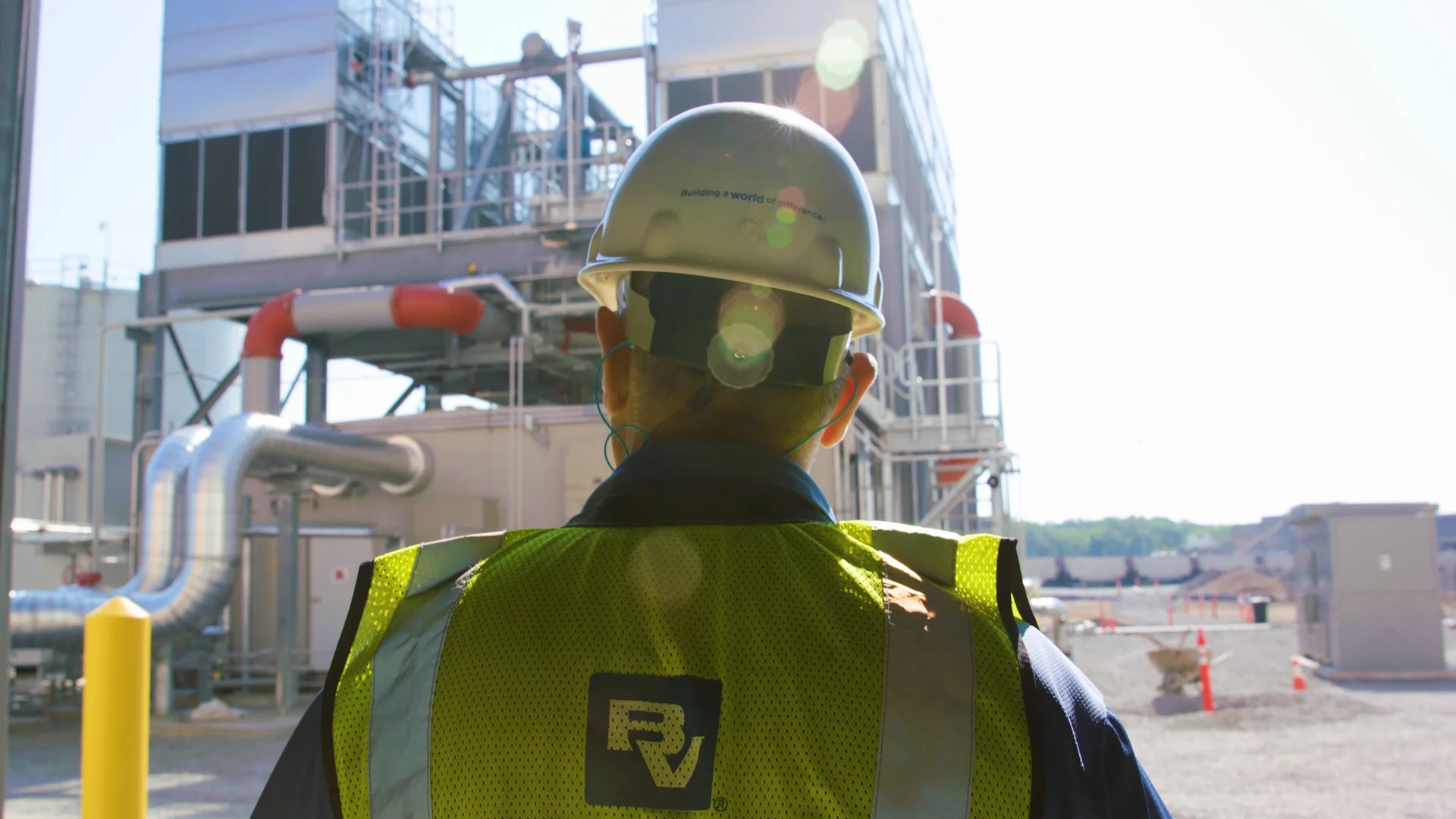Deep tunnel protects Louisville’s water quality

- Project Name
- Waterway Protection Tunnel
- Location
- Louisville, Kentucky
- Client
- Louisville and Jefferson County Metropolitan Sewer District
Overflow happens.
It happens in Louisville as it does in cities across the United States with combined sewer and stormwater conveyance systems that blend rainfall with untreated sewage on its way to a treatment facility. When major storms hit and overwhelm their capacities, the systems are designed to expel the excess mixture, allowing it to overflow into and pollute area streams and rivers.
Except in Louisville where the city’s combined sewer overflows (CSOs) are diverted instead to the $201 million, Black & Veatch-led and aptly named Waterway Protection Tunnel (WPT). The WPT is a conveyance and storage tunnel built deep in the bedrock below Louisville to cost-effectively reduce CSOs in the Ohio River and other area waterways.
Combined sewer systems were state-of-the-art technology when first introduced. That was in the 1800s. Since then, of course, urban areas have grown in population. They’ve become layered with impervious materials. Plus, with climate change, the frequency and intensity of storms is on the rise. As more volume has entered these systems and overwhelmed them more often, regulations have stepped up to reduce the CSOs and protect local water quality.
Such was the case in Louisville. The WPT was developed as part of the city’s Integrated Overflow Abatement Plan with the U.S. Environmental Protection Agency and Kentucky Department for Environmental Protection (KDEP). It was implemented by the Louisville and Jefferson County Metropolitan Sewer District (MSD), which provides wastewater treatment, stormwater/drainage management, and Ohio River flood protection across 376 square miles of the Louisville metro area.
In 2015, Black & Veatch performed a preliminary engineering study evaluating conveyance and storage options for MSD’s abatement plan. MSD had originally considered building CSO storage basins in downtown Louisville and surrounding neighborhoods. However, as preliminary engineering progressed, the Black & Veatch team also evaluated the possibility of combining the storage basins into a single deep rock tunnel, drawing on its experience on similar projects in Grand Rapids, Michigan, Toledo, Ohio, and Toronto. The evaluation concluded that a deep rock tunnel would be much less disruptive to the community and provide more storage volume for the same cost as the basins – a win for all stakeholders.
Working on an accelerated timeline and keeping the abatement plan on schedule, Black & Veatch completed the design of the deep tunnel and drop shaft package in approximately eight months. During construction, the tunnel was extended by a change order to replace an additional CSO basin and connect the existing Ohio River Force Main (ORFM) to the tunnel system. Once again, the BV team completed the design of the extension and ORFM connection quickly, in less than four months.
In addition to the design, Black & Veatch provided construction management and inspection services for the project. The work included deep-rock geotechnical investigations and alternatives analysis comparing costs and schedules.
Tunnel Features
Completed: June 2022
Length: 4 miles, part of it below the Ohio River
Diameter: 20 feet finished with 12-inch concrete lining
Depth: 220 feet below Louisville (about 18 stories) in bedrock
Storage capacity: 55 million gallons, preventing 439 million gallons of overflow in a typical year
Drop structures: 6, to convey flows to the tunnel
Adits: 470 feet, connecting drop shafts to the tunnel
Bifurcation: A “Y” in the alignment that required backup of the tunnel boring machine
Two-pass construction: excavation and concrete lining
Accelerated timeline: detailed design of deep tunnel and drop shaft package completed in 8 months
“Black & Veatch was a key partner in helping MSD implement our CSO tunnel solution in Louisville. The approach helped MSD reduce surface disruptions while increasing storage volume. BV’s construction managers, inspectors and tunneling experts were always available and provided MSD the required support during construction of the tunnel.”
Greg Powell, Director, Louisville and Jefferson County MSD
Contact Us
Looking for a partner in innovation?
Let's Talk
